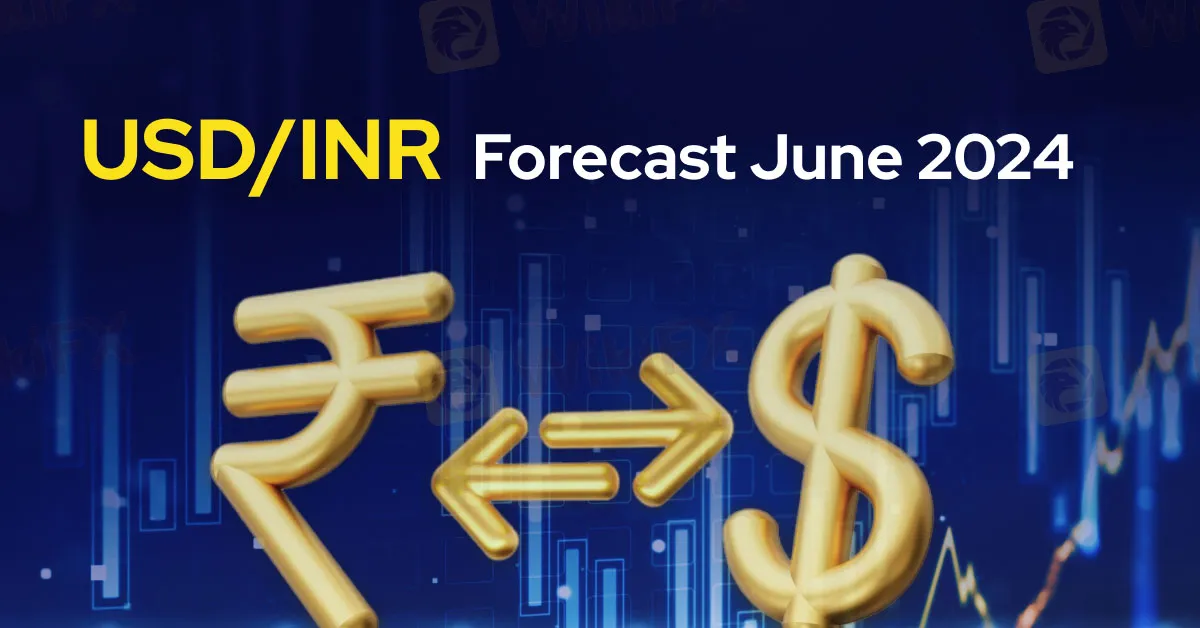简体中文
繁體中文
English
Pусский
日本語
ภาษาไทย
Tiếng Việt
Bahasa Indonesia
Español
हिन्दी
Filippiiniläinen
Français
Deutsch
Português
Türkçe
한국어
العربية
USD/INR Forecast July 2024
Abstract:Since late March, the USD/INR price range has been testing its higher limits. The support levels for this currency pair have also risen during this period, demonstrating a robust market structure. However, the pair's ability to swiftly test lows and then revert to the higher price range introduces caution for day traders, indicating the need for vigilance and strategic planning.

Since late March, the USD/INR price range has been testing its higher limits. The support levels for this currency pair have also risen during this period, demonstrating a robust market structure. However, the pair's ability to swiftly test lows and then revert to the higher price range introduces caution for day traders, indicating the need for vigilance and strategic planning.
In June, the USD/INR closed near the 83.3350 level, mirroring its position on January 8th. Since March 26th, the pair has consistently tested this range, providing opportunities for traders to speculate within a well-defined price realm. These daily fluctuations, although seemingly minor, offer ample trading opportunities via brokers' platforms.
Junes Trading Insights
June ended with the USD/INR around the 83.3350 mark, the lowest point for the week ending June 28th, highlighting a crucial support level established on June 5th. On June 4th, the pair reached a high of nearly 83.6350, with the peak for the month on June 20th at 83.6680. While these movements might seem significant from a mathematical standpoint, the USD/INR remains one of the least volatile pairs in Forex. However, leveraged traders might perceive these fluctuations differently due to the potential for amplified gains or losses.
Tight Controls and Market Dynamics
Day trading the USD/INR is almost forbidden for retail traders in India, leading many to trade via foreign brokers. As July begins, the support near 83.3300 is notable, but predicting daily trends remains challenging without insights into large financial transactions involving Indian corporations or international trade with India. The Indian governments tight control over the USD/INR ensures the currency's value remains stable, limiting significant market disruptions.
Weak Correlations with U.S. Economic Data
Correlating the USD/INR movements with U.S. economic data is complex. While narratives can be crafted to explain the currency pair's fluctuations based on U.S. data, concrete evidence supporting these correlations is scarce. India's vibrant economic data and strong GDP further complicate these connections, indicating that the USD/INR operates within its technical range, relatively independent of U.S. economic influences.
Strategic Trading Approaches
Given the tight control and limited insights into market moves, day traders should consider short-term strategies focused on the USD/INR's established support and resistance levels. When the support near 83.3300 is tested, looking for limited upside bursts can be logical. Conversely, when the pair reaches recent resistance levels, a speculative selling position might prove attractive.
Conclusion
While the USD/INR offers day trading opportunities, understanding the broader economic context and the Indian government's influence is crucial. Traders should approach this pair with a strategic mindset, leveraging the technical range to make informed decisions.

Disclaimer:
The views in this article only represent the author's personal views, and do not constitute investment advice on this platform. This platform does not guarantee the accuracy, completeness and timeliness of the information in the article, and will not be liable for any loss caused by the use of or reliance on the information in the article.
Read more

MTrading Users Report Withheld Funds and High Withdrawal Fees
Traders from Kenya and Thailand have had bad experiences with MTrading as they faced withdrawal restrictions, higher deposit fees, and refusal to release funds. Is MTrading safe to trade forex?

Webull Canada Launches Options Trading and Advanced Tools
Webull Canada introduces options trading, Advanced Order Types, and OTC market access, offering enhanced opportunities for investors.

OANDA Expands ETF Offerings in EU for Portfolio Diversification
OANDA introduces 350+ ETFs in the EU, enhancing portfolio diversification with commission-free trades and competitive trading conditions.

Account Deleted, Funds Gone: A New Broker Tactic to Beware Of?
The main trading dashboard account of a trader for LQH Markets was completely deleted by a broker. The trader is not being offered any access to their funds or profits. This incident shows the risks of trading markets and brokers and the importance of protecting your funds without relying on any broker.
WikiFX Broker
Latest News
Love, Investment & Lies: Online Date Turned into a RM103,000 Scam
Pi Network: Scam Allegations Spark Heated Debate
Broker Comparsion: FXTM vs AvaTrade
OANDA Expands ETF Offerings in EU for Portfolio Diversification
Broker’s Promise Turns to Loss – Funds Disappear, No Compensation!
FCA Warns Public About 7 Unauthorised Financial Firms
Broker Took 10% of User's Profits – New Way to Swindle You? Beware!
Webull Canada Launches Options Trading and Advanced Tools
Account Deleted, Funds Gone: A New Broker Tactic to Beware Of?
FCA Introduces PASS and AI Testing to Support Financial Innovation
Currency Calculator


